New Penicillium and Talaromyces species from honey, pollen and nests of stingless bees
- PMID: 29654567
- PMCID: PMC6153986
- DOI: 10.1007/s10482-018-1081-1
New Penicillium and Talaromyces species from honey, pollen and nests of stingless bees
Abstract
Penicillium and Talaromyces species have a worldwide distribution and are isolated from various materials and hosts, including insects and their substrates. The aim of this study was to characterize the Penicillium and Talaromyces species obtained during a survey of honey, pollen and the inside of nests of Melipona scutellaris. A total of 100 isolates were obtained during the survey and 82% of those strains belonged to Penicillium and 18% to Talaromyces. Identification of these isolates was performed based on phenotypic characters and β-tubulin and ITS sequencing. Twenty-one species were identified in Penicillium and six in Talaromyces, including seven new species. These new species were studied in detail using a polyphasic approach combining phenotypic, molecular and extrolite data. The four new Penicillium species belong to sections Sclerotiora (Penicillium fernandesiae sp. nov., Penicillium mellis sp. nov., Penicillium meliponae sp. nov.) and Gracilenta (Penicillium apimei sp. nov.) and the three new Talaromyces species to sections Helici (Talaromyces pigmentosus sp. nov.), Talaromyces (Talaromyces mycothecae sp. nov.) and Trachyspermi (Talaromyces brasiliensis sp. nov.). The invalidly described species Penicillium echinulonalgiovense sp. nov. was also isolated during the survey and this species is validated here.
Keywords: 8 new taxa; Aspergillaceae; Fungal ecology; Polyphasic approach; Taxonomy; Trichocomaceae.
Conflict of interest statement
All authors declare that they have no conflict of interest.
Figures


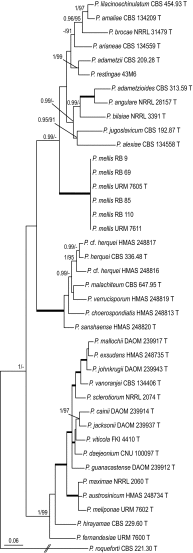
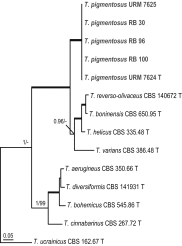



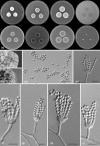

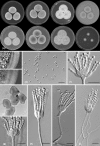

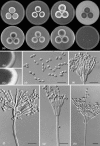

References
-
- Almeida-Muradian LB, Stramm KM, Horita A, et al. Comparative study of the physicochemical and palynological characteristics of honey from Melipona subnitida and Apis mellifera. IFST. 2013;48:1698–1706.
-
- Barbosa RN, Bezerra JDP, Souza-Motta CM, Gomes BS, Costa CMC, Melo HF. Prospection on yeasts from stingless bees honey in Brazilian Tropical Dry Forest (Caatinga) Gaia Scientia. 2016;10:151–159. doi: 10.21707/gs.v10.n04a11. - DOI
-
- Bode HB. Insect-associated microorganisms as a source for novel secondary metabolites with therapeutic potential. In: Vilcinskas A, editor. Insect Biotechnology. Netherlands: Springer; 2011. pp. 77–93.
-
- Brown JC, Oliveira ML. The impact of agricultural colonization and deforestation on stingless bee (Apidae: Meliponini) composition and richness in Rondnia, Brazil. Apidologie. 2014;42:172–188. doi: 10.1007/s13592-013-0236-3. - DOI
MeSH terms
Grants and funding
LinkOut - more resources
Full Text Sources
Other Literature Sources

